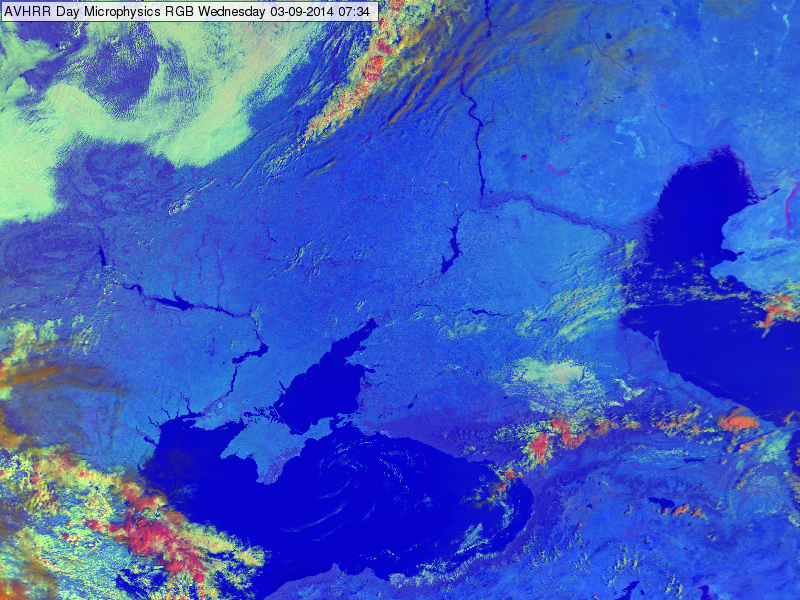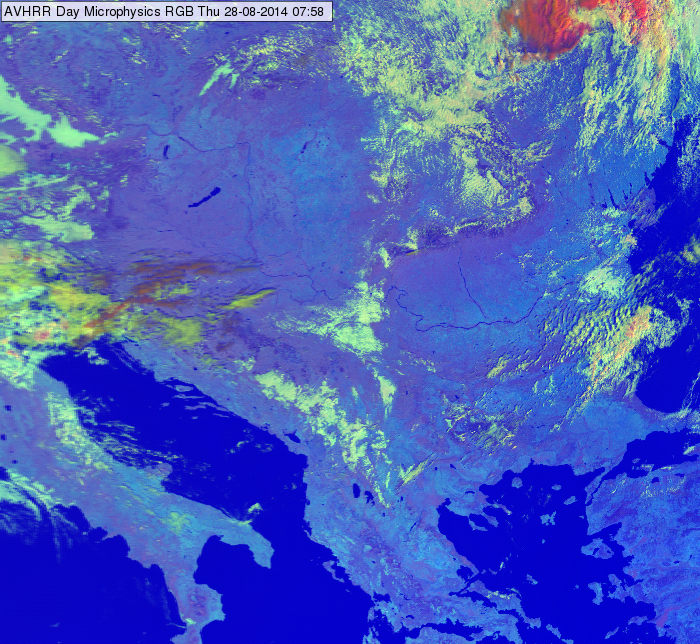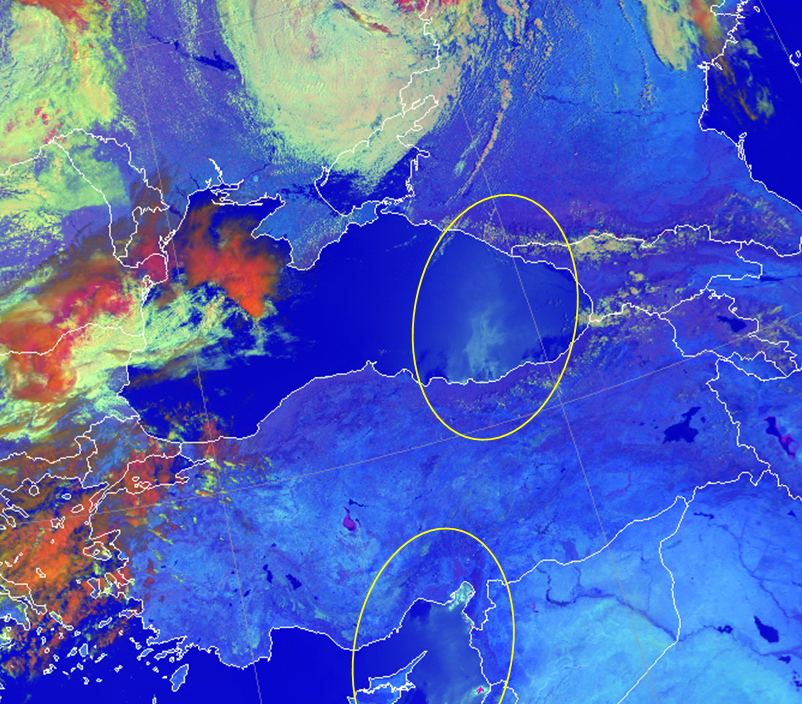Oceans and lakes
The AVHRR sensor on MetOp measures in the visible channels 0.87 micron and 1.6 micron only small amounts of backscattered solar radiation from water surfaces, because water strongly absorbs the shortwave radiation. Therefore, in the Day Microphysics RGB images (see the recipe) both the red and the green colour beams are weak for these areas. The only colour beam with noteworthy contribution is the blue one visualizing the 10.8 micron channel. As a consequence the Day Microphysics RGB depicts the open water surfaces in medium or somewhat darker blue shades depending on the water skin temperature (the warmer – the darker).
The image below shows the area of Black and Caspian Seas on 03 September 2014 at 07:34 UTC. Several rivers, like Volga, Dnieper are well seen.

MetOp AVHRR Day Microphysics RGB image, 03 September 2014 07:34 UTC
The following image shows the area of the Adriatic, Aegean Seas and the western coast of the Black Sea. Also the river Danube is well recognizable.

MetOp AVHRR Day Microphysics RGB image, 28 August 2014 07:58 UTC
Note that water covered by ice or by vegetation has different colours in the Day Microphysics RGB images. If the lake is covered by vegetation (e.g. reed) its colour shifts towards violet, if it is covered by ice (partly or totally), its colour shifts towards magenta.
On the sunglint area, the color may alter considerably. Sunglint is the mirror-like reflection of the Sun off a water surface in a satellite image. Over such areas the red and green color signals will not be negligible any more. The intensity of the solar reflection depends on the water surface roughness (magnitude of the waves). The color may alter only slightly by shifting towards cyan, or can change considerably, even into magenta. An example is shown in the image below, where the sunglint area is indicated by the yellow circles.

MetOp AVHRR Day Microphysics RGB image, 27 June 2014 07:40 UTC. Sun glint areas over water inside yellow circles.

